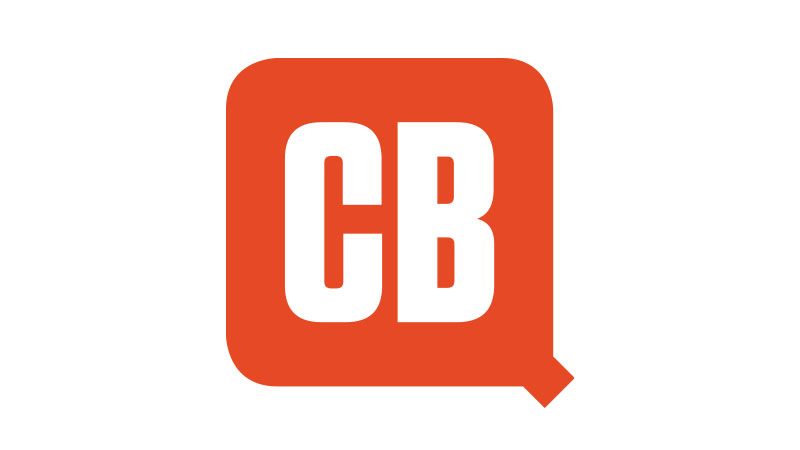Pete Cashmore
Launched from Pete Cashmore’s home in 2005, Mashable now gets 5m page views a month and is poised to overtake TechCrunch. He talks to Oliver Lindberg about redesigns, micro-content and joining the social conversation
Things have been happening at Mashable recently. The social tech blog had a significant redesign, announced the acquisition of micro-reviews service Blippr and is now getting ever closer to overtaking its rival TechCrunch in terms of unique visitors. At a time when a lot of tech companies are struggling and sliding towards the deadpool, 23-year-old CEO Pete Cashmore certainly is defying his critics.
The redesign was a good opportunity to have a clean up. Mashable wanted to focus more on content, make it more accessible and reduce ads. “The site was a mess,” Pete explains. “The code was very messy but also visually it was very lax. We wanted to clean up the navigation, but it’s still something people are sceptical about, so we’re trying to simplify it. Currently, we’ve got a double navigation with Mashable Lists along the top and News Channels along the next line. People still find that visually overwhelming.”
The main goal of the makeover, however, was to rebrand Mashable as a ‘Social Media Guide’ (the previous tagline was ‘All That’s New On The Web’). From its beginning in 2005, Mashable concentrated on social networks, and now that everybody can be a publisher, the site aims to track the transition towards social media even more. This change can be witnessed in a new feature called Social Media Comments, which Mashable has introduced together with blog comment service Disqus and comment aggregation service UberVU. “People mention a Mashable post on FriendFeed or submit it to Digg and add a comment there,” Pete Cashmore says. “In fact, they’re commenting on Twitter more now than they are in the Comments on Mashable. So we were trying to figure out how to connect loose ends and not lose the conversation to all these other sites. We’re now pulling comments back from virtually any social site where people are talking about Mashable articles and keeping the conversation with us.”
Disqus users posting comments to Mashable can already syndicate their comments to Twitter, and support for more services is in the pipeline, so the conversation about Mashable isn’t scattered around the web but remains with the original posts.
Community involvement
Usually our editors explain what’s good on the web and cover services they think our readers will like but what we’re seeing more and more, especially with Twitter, is that people are getting recommendations from their friends
Although Mashable is introducing social features to the site, Pete can’t see it heading further into the social networking space. Its main community component is based around Blippr, the micro-reviews site Mashable acquired in March. It enables you to send and receive recommendations on web apps, books, games, movies and music in up to 160 characters. “Usually our editors explain what’s good on the web and cover services they think our readers will like but what we’re seeing more and more, especially with Twitter, is that people are getting recommendations from their friends,” says Pete. “It’s more powerful when my friends say they liked a movie than reading it on a blog. We saw the conversation and the recommendation of web applications moving to Twitter more and we’d been looking at this company called Blippr, which is essentially a recommendation engine, for a long time. You can do a review of Twitter and syndicate it to your other accounts, but then you get recommendations back and it’ll tell you about Twitter clients and that people have given really high ratings to twhirl and TweetDeck. It’s more personalised and based on friendship and community.”
Mashable has already started integrating Blippr’s service. Every time a post mentions the name of a web company or social site, an emoticon appears next to it indicating the community’s rating. The face is green, for instance, if it’s got a positive review, red if it’s negative. Hover over it and you can submit your own review and syndicate it to Twitter and FriendFeed.
According to Pete, micro-content is getting more and more important. Blippr will help to make sense of all the data and determine the current sentiment on any given company, including your own. “Ego search is becoming a big thing,” he explains. “You go to Twitter Search and see who’s talking about you and your brand. Blippr is a possible ego search place where we can track the reactions to things like the Facebook redesign. The reason I made this big move is that I see the great monetisation opportunity in establishing a sentiment of all these people on Twitter. It could stop a backlash before it happens.”
Home-made mash
Pete Cashmore launched Mashable from his home in Aberdeen in late 2005. He was looking for the next big thing of his generation and the internet provided tons of opportunities. “I realised that by going purely web based I could grow something,” he recalls. “I started writing and thought I was going to start a web company. I didn’t realise that the writing would be the company. People started reading it, and over the year I saw the traffic picking up. Mashable was one of the top 10 blogs within a year and a half. Then we started getting advertising at a stage when everyone was saying that blogs won’t make any money. I think our first ad was UserPlane, a chat company that paid around $3,000 for a month, and I thought that was phenomenal.”
Daily design news, reviews, how-tos and more, as picked by the editors.

Today 11 people work on the site. Last year Pete moved to San Francisco, but now divides his time between Silicon Valley and Scotland. “There are a few reasons I went to San Francisco, partly because of the time difference – in Scotland I got up at noon and worked until 5 or 6am, partly because that’s where the hub is. It’s worthwhile, but also when I’m in Scotland I get a lot more work done. I’m able to focus, there are no distractions and you make better decisions when you’re surrounded by people who are realists and not caught up in the scene. Asking people who aren’t in tech what they think is the way you build something massive.”
Twitter isn’t insignificant in terms of traffic but what it’s really significant for is engagement
It’s a recipe that’s definitely worked for Mashable. The blog is attracting more than five million page views per month and major web tracking services including Alexa and Compete are predicting that it’s about to take the lead over TechCrunch. Much of the traffic is coming from Twitter. The site’s Twitter account (run by Pete) has 700,000 followers and is featured on the Suggested Users list, but Mashable posts also get retweeted a lot. “Twitter is a very large and fair referrer of traffic, although it’s hard to tell what amount Twitter is referring. It shows up on our referrer stats, but so much usage is on desktop applications and we’re probably undermeasuring it by about a half. Twitter isn’t insignificant in terms of traffic but what it’s really significant for is engagement. We’ve noticed that when we tweet about posts, we get a lot more people talking about Mashable on Twitter and elsewhere. It’s a source of very engaged people. They’re used to contributing content in a very low barrier way. So it’s not to do with how much traffic, it’s about the type. We’re a social media guide, and it’s the best traffic we could have. Twitter is key for Mashable because it’s got a social media audience.”
It’s an interesting symbiosis. As long as Twitter is growing, Mashable will do the same and vice versa. So it’s no surprise that Pete sees Twitter as leading all the major trends this year (shortform content, self-publishing, mobile and interconnectedness) and has even incorporated it into Mashable’s ad strategy. Twitter Brand Sponsors is a “sociable ad” format that enables companies and one charity that use Twitter to engage with their customers by syndicating their tweets into the Mashable sidebar for a month. The aim is to make the ads less annoying, but also more interesting and engaging.
Right now the site isn’t for sale but Pete says it’s always incredibly tempting to look at how much you’d get when you have something of value. Eventually it might make sense to sell Mashable, but Pete thinks it’s currently worth more than any amount he’s been offered. For Mashable, the Web 2.0 revolution is far from over.

The Creative Bloq team is made up of a group of art and design enthusiasts, and has changed and evolved since Creative Bloq began back in 2012. The current website team consists of eight full-time members of staff: Editor Georgia Coggan, Deputy Editor Rosie Hilder, Ecommerce Editor Beren Neale, Senior News Editor Daniel Piper, Editor, Digital Art and 3D Ian Dean, Tech Reviews Editor Erlingur Einarsson, Ecommerce Writer Beth Nicholls and Staff Writer Natalie Fear, as well as a roster of freelancers from around the world. The ImagineFX magazine team also pitch in, ensuring that content from leading digital art publication ImagineFX is represented on Creative Bloq.
